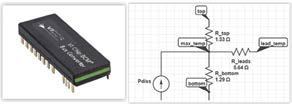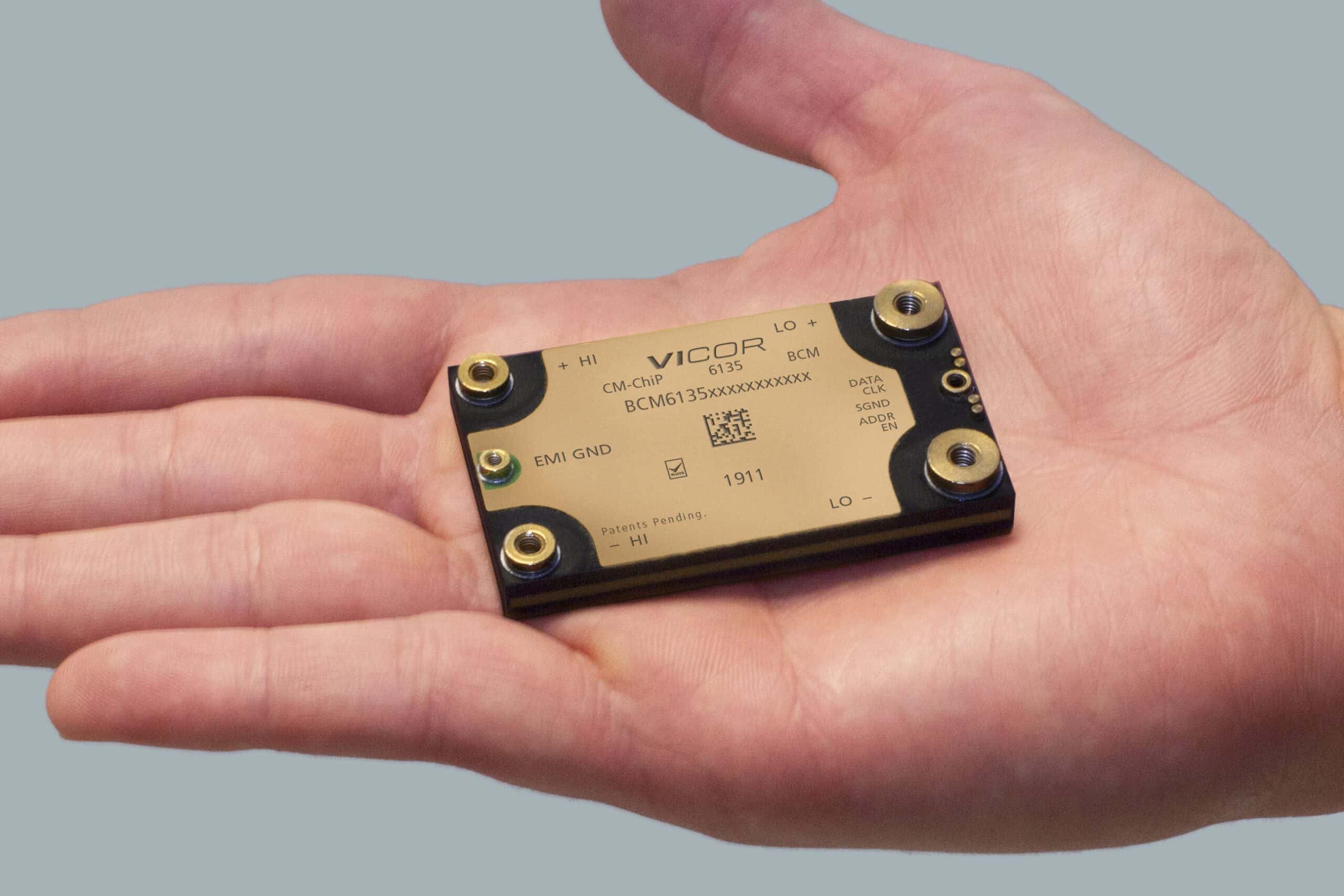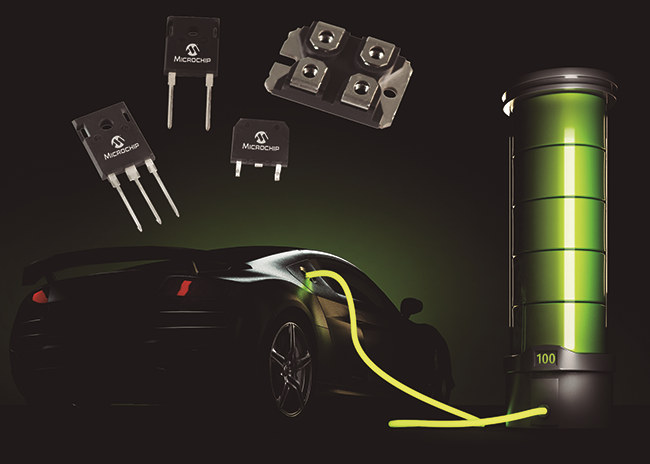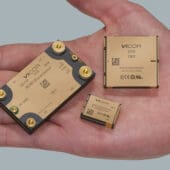Today power system engineers are able to come up with designs that, from the point of view of efficiency and power density – power delivered at a given volume – are far in advance of what was possible relatively a few years ago. years. Continuous advancement in semiconductor device performance is achieved through ever more efficient circuit architectures and ingenious physical constructions that deliver ever higher performance in ever smaller modules. Switching architectures have become widespread, except for special lower power regulator designs, and each new generation of power transistors comes closer to the ideal switching, that is, one that would achieve zero conduction losses and zero losses. in switching. This ideal is not expected to be achieved with any real-world technology, so while devices continue to improve, they are not perfect and losses, ie dissipation of unwanted heat, must be dealt with.
The result can be somewhat paradoxical. Despite using the lowest loss devices and topologies available, handling increasingly higher power levels in very small spaces causes the remaining losses to be concentrated in the same area or volume. This in turn requires that the limitations be more demanding in systems whose refrigeration has not been correctly designed than in systems with electrical limitations. Components can reach, for example, the limits specified for the working temperature before, for example, the output current. Thermal aspects are fundamental to a successful design.
Cooler devices last longer
In addition to never exceeding specified parameters, engineers will always strive to address the thermal aspects of their design so that the temperature of vital components is as low as possible. The traditional rule of thumb, according to which for every 10 degrees increase in temperature the useful life of the component is halved, is still valid and an improvement in reliability is related to the reduction of the working temperature. Predicting thermal response at the design stage is not necessarily an easy task, largely because to achieve current goals (size, weight, and power) the option of installing a “big” heat sink is often not feasible. The key parameter in any thermal type calculation is usually called Tj, the junction temperature.
Taking the days of the first junction transistors as a reference, it is the working temperature in silicon (or other semiconductors) where the switching takes place. Between it and the external ambient thermal environment will be numerous complex structures, barriers to heat flow, or routes by which heat can escape. The semiconductor chip is attached to a substrate or connecting frame; there are connections that improve thermal conduction and layers of the mold material that prevent it. In a complex device there will be several sources of heat and the total temperature rise at any point will be the sum of the temperature rise due to heat generated at any point, as well as that from nearby components. Even the point of maximum temperature rise could vary in a device when operating with different input voltages, different output voltages, and different cooling strategies.
To make matters worse, the thermal resistance of copper, and most electrical components, increases with temperature. Copper has an electrical resistance 30% higher at 100°C than at 25°C, which is an incentive for temperatures to be as low as possible; as the temperature increases, so does the electrical resistance and the heat losses are proportionally even higher. Modeling techniques for the maximum internal temperature of these structures are highly developed, but they often use finite element modeling and computational fluid mechanics, which are not part of the quick calculations commonly used within the product design process.
Simplified thermal models
Fortunately, there is an alternative consisting of thermal models presented in electric-analog terms. These thermal models are made up of “resistors”, “current sources” and “voltage sources”. Applying the same electrical domain analysis offers a simple way to quantify the maximum internal temperature and heat flux through the various cooling paths in the design. These models use the concept of a single virtual node that represents the maximum internal temperature of an active device or module. This virtual node does not represent a fixed point in the device but rather the maximum internal temperature of the device under all electrical and thermal cooling conditions. Around it are organized representations of each route by which heat can escape from each node.
In this analogy, the symbol "resistance" represents such a path (offering some restriction to heat flow) and its units are degrees Celsius/watt (°C/W). The heat source can be determined from data sheet graphs that show the efficiency or power dissipation of the device in watts for known electrical operating conditions. In steady state (which is described by this simplified representation) this power dissipation or power loss must be equal to the heat conducted from the device to the environment. In the thermal-electrical analogy, power dissipation or loss in the thermal system is represented in the electrical circuit model by means of a current source applied to the internal virtual thermal node. Pathways for conduction of heat to the environment typically include conduction along the top surface of a package, conduction through the pins or soldering area of the device to the printed circuit board, or conduction through the bottom of a encapsulated. In steady state the temperature will be stable for each boundary: towards a heat sink, cold plate or printed circuit board surface.
This fixed temperature in the thermal system is analogous to a "voltage source" in the electrical system. It remains the same value (in °C) even though it absorbs any heat flux it receives. Backing up this simplified description is exactly the detailed finite element computation cited above and now simplified into what is, in effect, a model of the thermal performance response of the device in this package. A simple calculation demonstrates how these models are applied.
Calculation Examples
A bus converter module (BCM) in the Vicor ChiP package. The BCM is a fixed factor DC/DC converter that can be used as a “DC transformer” to switch from one bus voltage to another. The ChiP package is in the form of a fully molded, double-row integrated circuit. The BCM based on this scheme comes to embody the features outlined above; It is highly efficient and takes up a small package, is capable of delivering very substantial amounts of power, and to achieve this it takes advantage of good thermal design to remove the heat it dissipates. The simplified thermal model of the application of a BCM. The BCM data sheet indicates that the maximum operating temperature is 125°C, so this is the maximum allowable temperature of its internal virtual node, named 'max_temp'. Under these conditions, the device supplies 1750W with an efficiency of 96,5% for a dissipated power of 62,81W. The dissipated power is shown in the thermal model as “current source”. This model offers three possible routes for heat removal from the package: through the molding to the top surface of the device, through the molding to the bottom surface of the device, and through the terminals/pins to the PCB. Within this exercise, the bottom surface and terminals of the device are considered to be adiabatic, that is, the heat flux does not pass through these surfaces.
In the case of the lower temperature this could be because an air gap is to be expected between the bottom surface of the device and the underlying PCB. This adiabatic condition with no heat transfer to the terminals could be due to the fact that the PCB is expected to operate at sufficiently high temperatures that the temperature difference between the inside of the device and the PCB is not sufficient as to enhance heat flow. It is assumed that the top surface of the device is in contact with a heat sink or cold plate that keeps it at a temperature of 42°C. From these premises, it can be estimated that the maximum temperature inside the device is equal to the maximum operating temperature of 125°C. Thermal interface material (TIM) is required in the system as it provides a thermal coupling between the drive and a cold plate or heat sink by filling in surface irregularities with a material whose thermal conductivity is much higher than that of the air This added thermal resistance may not need to be represented in the model since its thermal resistance is generally an order of magnitude less than the other resistive values in the thermal circuit model.
If TIM is thick enough and/or higher precision is desired, the thermal resistance of TIM would be expressed in the model as another resistance between 'R_top' and 'T_top'. Returning to the thermal model of the device, the designer has activated the cooling path through the converter pins, on the printed circuit board whose copper plane could act as a thermal path to the environment. In this case, the designer has prior knowledge to anticipate that the temperature of the printed circuit board will be 100°C. The rules commonly applied to parallel current paths (in the electrical schematic) are still valid and are used to quantify the maximum internal temperature in the circuit. The designer now determines that the acceptable top surface temperature is 47°C instead of 42°C to keep the maximum internal temperature of the device below the maximum operating temperature of 125°C. The circuit model also shows that 4,38 W of the 62,81 W total dissipation is conducted to the PCB under these conditions and the balance of 58,43 W would be conducted across the top. As an alternative, establishing thermal contact to the top and bottom of the case with heat sinks or cold plates, and keeping those surfaces at 84°C as in Figure 4, would keep the maximum internal temperature at 125°C. In this case, the 30,93 W of heat conducted through the top is practically equivalent to the 31,88 W of heat conducted through the bottom.
Airflow added to a heat sink
For most heat sinks, data is available that will allow the engineer to incorporate the thermal response of the heat sink into a circuit model. The performance of this heatsink is often characterized as a graph of thermal resistance in degrees Celsius per watt (°C/W) versus airflow through the heatsink in linear feet per minute (LFM). Polynomial fitting of this curve also provides a mathematical function to calculate thermal resistance as a function of airflow. Figure 5 shows a graph of thermal resistance for a Vicor 11mm heat sink (P/N 40704). The thermal resistance, expressed in degrees Celsius per watt, can be extracted from the graph and added directly to the thermal model as an analog electrical resistance. For the heat sink, a heat sink thermal resistance of 2,1 °C/W for 400 LFM airflow can be derived from the graph or by polynomial calculations. The described technique of thermal circuit modeling provides a simple and useful tool for the development and characterization of an effective thermal management system for power components without the need to purchase and learn to use expensive thermal simulation software.
Operating power components below the specified maximum internal temperature ensures higher reliability and higher MTBF, as well as increased electrical efficiency. The data sheet provides models of circuits thermal, efficiency, and power dissipation curves, as well as safe operating zone graphs for each Vicor drive. These data, together with insights into the application environment, can be used to estimate the internal temperature of the power component and ensure operation within the permitted range.








